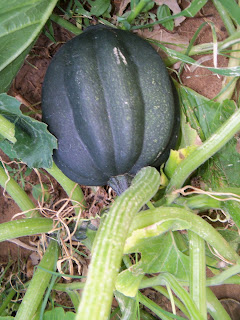
I love the idea of "His and Hers" bicycles: an elegant pair of lady's and gentleman's bikes from the same manufacturer. When we first decided to ride bicycles, the Co-Habitant and I envisioned ourselves exclusively on such matched pairs. We acquired a
Pashley Princess and
Roadster as our transport bikes.We acquired a
Motobecane Super Mirage and
Mirage Mixte as our roadbikes.And we acquired a
Raleigh DL-1 Touristand
Lady Tourist as our vintage 3-speeds.

It was all so perfect!... except that it wasn't. I could never keep up when we were both on the
Pashleys, which was a constant source of discontent (I am now convinced that the female model is just inherently different from the male one). With the
Motobecanes things were even worse, as my semi-upright mixte was no match for his racy
SuperMirage roadbike. Despite being perfectly matched in looks, our beautiful velo couples were plagued by a disparity in performance.

Having finally decided that the illusion of perfection was not the same as perfection itself, I shattered the symmetry - first by replacing my
Pashley Princess with a vintage
Gazelle, and then by selling my
Motobecane mixte. Interestingly, the
Gazelle is a better match for the
Pashley Roadster performance-wise, and we no longer experience the same problem with discrepancies in speed when cycling together on our commuter bikes.

As for roadbikes, it is difficult to keep up with somebody on drop bars, while yourself riding with upright bars - especially if you are a weaker cyclist to begin with. My
Rivendelland
Trekroadbikesmay not look as sexy next to the Co-Habitant's
Motobecane as my vintagemixte did, but they are a better match when it comes to actually cycling together.
This particular discrepancy in "his and hers" bikes is something I wonder about when I see a man and a woman cycling together, where he is on an aggressive roadbike and she is on an upright hybrid from the same manufacturer (usually
Trek,Cannondale or
Specialized). While I understand that the idea is for the woman (who is presumably less skilled) to ride an "easier bike," surely it must make the difference in their skill levels all the more acutely felt?

Of the three "His and Hers" pairs we started with, only our vintage
Raleigh DL-1s remain. These are actually matched pretty nicely in terms of performance, so apparently "back in the day" Raleigh got it right whereas today's
Pashley did not. Although we do not ride these as often as we ride our main transport bikes, it is nice to have at least one pair of bicycles that matches both in looks
and performance. Who knows, maybe in the future there will be more - but the performance aspect is a must. After all, a couple's chemistry is about more than just looks.
 Today we went to explore the downtown area of Gaylord. The whole town is done in a Swiss/Alpine theme and it is so cute! Our first stop was an ice cream shop that was giving out cones for a $1 donation to the Boys/Girls Clubs.
Today we went to explore the downtown area of Gaylord. The whole town is done in a Swiss/Alpine theme and it is so cute! Our first stop was an ice cream shop that was giving out cones for a $1 donation to the Boys/Girls Clubs. Then we wandered around just looking at the buildings and bears and monuments.
Then we wandered around just looking at the buildings and bears and monuments.


 This big rock was along the steep hill going into or out of Ghost Canyon. Because it is fall the leaves were gone on the aspen trees and we could see the rocks better than we would have been able to in the summer. The rocks on this portion of the road were the biggest we saw.
This big rock was along the steep hill going into or out of Ghost Canyon. Because it is fall the leaves were gone on the aspen trees and we could see the rocks better than we would have been able to in the summer. The rocks on this portion of the road were the biggest we saw.

















 My Campsite.
My Campsite. The Erickson/Riggs home at Faraway Ranch, Bonita Canyon.
The Erickson/Riggs home at Faraway Ranch, Bonita Canyon. Beyond Bonita Canyon are the mountains. The trails wind through the incredible rock formations – pillars and balancing rocks galore! It is a wondrous place, indeed.
Beyond Bonita Canyon are the mountains. The trails wind through the incredible rock formations – pillars and balancing rocks galore! It is a wondrous place, indeed.





 From the Crest of the Sandias you can see Albuquerque but can look off to the northeast also.
From the Crest of the Sandias you can see Albuquerque but can look off to the northeast also.